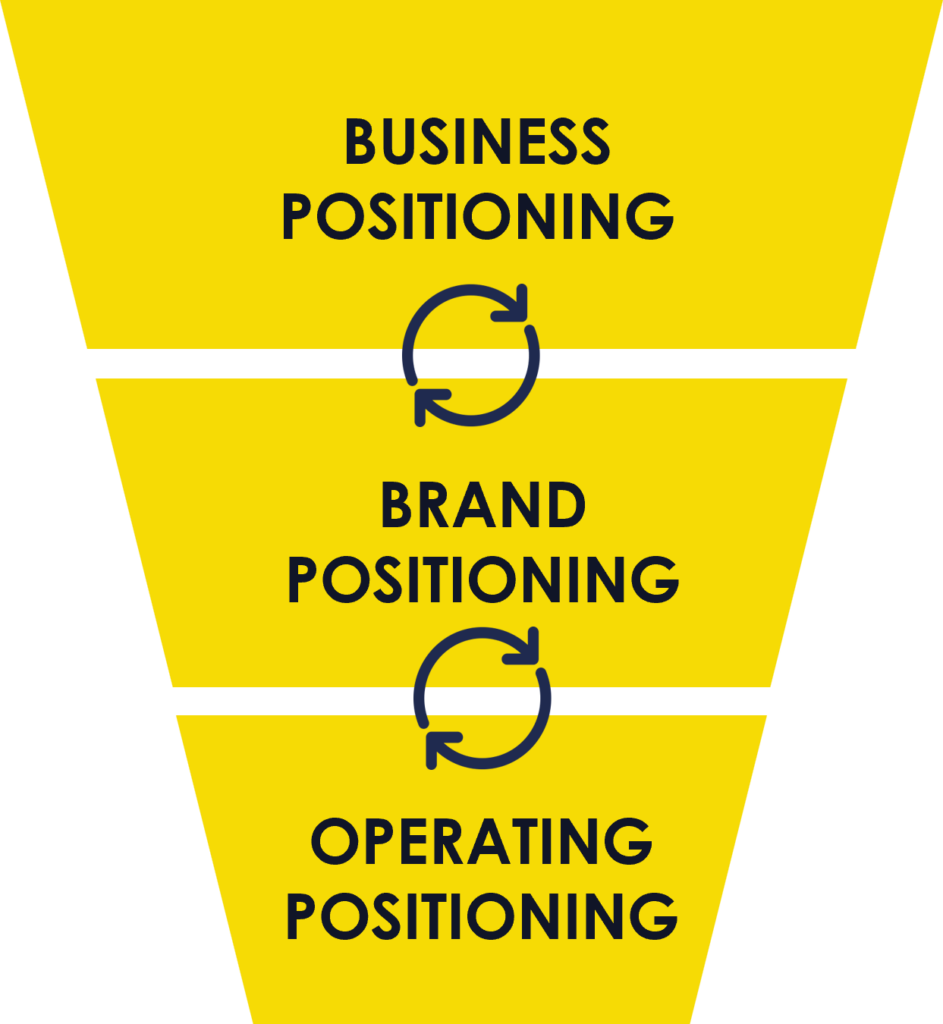
Article
Why brand positioning should be a matter for the entire C-suite
When we think of famous brands, what comes to mind first are their logos, color palettes and taglines. While these creative elements are crucial for brand recognition, they are supported – or should be – by a thoughtful, long-term strategy.
What is brand positioning and why does it matter?
A brand, as defined by Amazon CEO Jeff Bezos, is the story people tell about you when you’re not in the room. How people interact with your brand depends on how you position yourself in the market. Effective brand positioning helps you to:
- stand out from the competition;
- increase customer loyalty and drive sales;
- justify a higher price point;
- define and focus on relevant future growth
Bottom line: if you do it right, brand positioning makes your business run better and maximizes shareholder value. The idea that the intangible concept of a brand can drive so much value for a company is – of course – exciting. However, it can’t be rushed …
Sarah De Bruyne, consulting manager at The House of Marketing is an expert in brand strategy and positioning. She is sharing her insights on what to do (and what not) if you want to create and maintain a winning brand.
Don’t skip the strategy
“When thinking of brand positioning, companies often focus first on the creative assets, such as a logo, tagline, tone-of-voice, etc. But in doing so, they forget that all these elements should be directly based on a long-term brand strategy, one that is aligned with their business strategy.” says Sarah.
From strategy to creation: 3 levels of positioning
To successfully position your brand, you need to address 3 levels:
Level #1: Business positioning
First, ask yourself: “Where do we play?” To answer this question, you need to bring up a host of other questions, such as:
- What markets do we want to play in?
- What is our ideal brand architecture – how many brands do we need?
- What is our value proposition?
- Who is our target audience?
Level #2: Brand positioning
Next question: “How do we win?” Which comes down to:
- What do we want our customers to think and feel when they engage with our brand?
- What features, advantages, and benefits do we need to claim?
- What is our personality – what image should our brand portray?
Level #3: Operational positioning
Final question: “How do we bring our brand positioning to life?” Here, think about what you need to tell and show to achieve this desired brand positioning. Only in this step, all insights from the previous levels are bundled into a clear brand brief for your creative agency.

Sarah’s 5 rules of thumb for successful brand positioning
#1: Dare to choose
Don’t try to please everyone. Claim one or a few benefits that make your brand unique and relevant to your target audience.
#2: Combine benefits into a unique value proposition
Of course, not all your brand benefits need to be unique. Often it is the combination of different benefits that make your brand stand out.
#3: Don’t just list your brand features
Instead, focus on how your brand responds to your customers’ needs. This makes it harder for competitors to imitate your positioning.
#4: Avoid the fluff
Don’t get too sentimental with emotional benefits. Aim for tangible, achievable goals that resonate with your audience.
#5: Stick to the strategy
Be consistent in your messaging. Incorporate your business strategy and brand positioning into every aspect of your marketing and communication efforts.
Learn what we did for Boels
Boels was struggling to turn their existing business strategy into a clear and distinctive story. Find out how our team helped them on their brand positioning journey.
Need help?
At Customer Collective, a brand positioning journey will always be aligned with your business strategy, build on extensive customer research and done in co-creation with the client. A brand positioning project with us, typically consists of these 3 steps:
#1: Diagnosis with the 4C analysis
Through extensive desk research and qualitative interviews, we zoom in on your brand from 4 perspectives: company, category, customer, and culture.
#2: Design the positioning during a strategic workshop
The goal of this workshop is to define the concept brand positioning and to further validate it with customers:
- What features, advantages, and benefits do we want to claim?
- How do we humanize our positioning (cf. brand personality)?
- What current features support the positioning and what are we missing for the future?
#3: Validate the positioning through quantitative research
To ensure a future-proof positioning, we validate and refine our ideas with customers. A technique we often use (internally) is the MaxDiff research method.